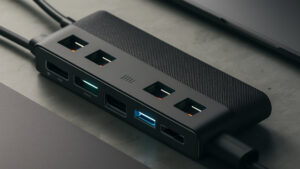To use single-stage auto paint, prepare the surface, apply primer if needed, then apply the single-stage paint. Single-stage auto paint is a convenient option for achieving a durable, glossy finish on your vehicle.
It combines the color and clear coat into a single application, saving time and effort. Whether you’re a DIY enthusiast or a professional, understanding how to use single-stage auto paint properly can help you achieve a high-quality finish. In this blog, we’ll explore the step-by-step process of using single-stage auto paint to ensure professional-looking results.
From surface preparation to the final clear coat application, we’ll cover all the essential aspects of using single-stage auto paint effectively. Whether you’re refinishing a classic car or refreshing your daily driver, mastering the use of single-stage auto paint can elevate the overall appearance of your vehicle.
Introduction To Single Stage Auto Paint
Single stage auto paint is a convenient option for DIY car enthusiasts. It can be applied directly to the vehicle’s surface without the need for a clear coat. To use single stage auto paint, ensure proper surface preparation, apply the paint evenly, and allow sufficient drying time for a professional finish.
The Basics Of Single Stage Paint
Single stage auto paint combines the color and clear coat in one. It simplifies the painting process and offers a glossy finish.
Benefits Of Choosing Single Stage Paint
Single stage paint is cost-effective, easy to apply, and provides a durable finish. It’s ideal for DIY enthusiasts and professionals alike.
Tools And Materials Needed
To use single stage auto paint, you’ll need a few essential tools and materials. These include a spray gun, air compressor, paint thinner, masking tape, sandpaper, and of course, the single stage auto paint itself. Make sure to prepare the surface properly before applying the paint for the best results.
If you’re looking to give your car a new look, using single-stage auto paint is a great option. This type of paint is easy to use and can be applied in one step, making the painting process less time-consuming. However, before getting started, it’s important to have the right tools and materials on hand.
Essential Equipment For Painting
To apply single-stage auto paint, you’ll need a few essential pieces of equipment. These include:
- Paint gun: A paint gun is used to apply the paint to the car’s surface.
- Air compressor: An air compressor is needed to power the paint gun.
- Spray booth or outdoor area: You’ll need a space to paint your car that’s well-ventilated and free from debris.
- Masking tape and paper: You’ll need masking tape and paper to cover any areas of the car you don’t want to paint.
- Sanding equipment: Sandpaper and a sanding block are needed to prepare the car’s surface for painting.
Safety Gear For The Job
While painting a car can be a fun DIY project, it’s important to take safety precautions. Here are a few pieces of safety gear you should have on hand:
- Respirator: A respirator will protect your lungs from paint fumes.
- Gloves: Gloves will protect your hands from the paint and any chemicals you may be using.
- Goggles: Goggles will protect your eyes from paint overspray and debris.
- Coveralls: Coveralls will protect your clothing from paint.
With the right tools and safety gear, you’ll be ready to tackle your single-stage auto painting project.
Preparation Of The Surface
Before you can achieve a flawless finish with single-stage auto paint, it is crucial to properly prepare the surface of your vehicle. This step-by-step guide will walk you through the essential tasks of cleaning and degreasing, as well as sanding for a smooth base.
Cleaning And Degreasing
Start by thoroughly cleaning the surface of your vehicle. Remove any dirt, grime, or debris using a mild car wash soap and water. Rinse well and dry the surface completely.
Next, use a degreaser to eliminate any traces of oil, grease, or wax. Apply the degreaser to a clean cloth and gently wipe the surface, paying close attention to areas prone to contamination such as the engine bay, door jambs, and wheel wells. Make sure to remove all residues.
Sanding For A Smooth Base
Once the surface is clean and free of contaminants, it’s time to sand for a smooth base. Sanding helps to remove imperfections, smooth out rough areas, and create a uniform surface for the paint to adhere to.
Start by selecting the appropriate sandpaper grit for the job. Coarser grits like 320 or 400 are ideal for removing heavy imperfections, while finer grits like 800 or 1000 are suitable for smoothing out the surface.
Using light pressure, sand the surface in a circular or back-and-forth motion, following the contours of the vehicle. Be sure to keep the sandpaper wet to prevent it from clogging up with paint particles. Rinse the surface periodically to remove any residue.
After sanding, wipe the surface clean with a microfiber cloth to remove any remaining dust or debris. Inspect the surface for any remaining imperfections and repeat the sanding process if necessary.
By thoroughly cleaning and degreasing the surface, as well as sanding for a smooth base, you are laying the foundation for a successful single-stage auto paint job. Take your time with these preparation steps, as they will ultimately determine the quality and longevity of your paint finish.
Mixing The Paint
When it comes to achieving a flawless paint job on your vehicle, proper mixing of the single stage auto paint is crucial. Understanding paint ratios and following tips for a perfect mix can make a significant difference in the final result.
Understanding Paint Ratios
Mixing the paint involves understanding the paint ratios, which typically consist of the paint, reducer, and hardener. The ratio varies based on the specific type and brand of paint being used. Always refer to the manufacturer’s guidelines for the correct paint ratios.
Tips For A Perfect Mix
- Measure the paint, reducer, and hardener precisely using a mixing cup or scale.
- Use the recommended mixing ratio provided by the paint manufacturer.
- Ensure the mixing area is clean to avoid any contamination in the paint.
- Thoroughly stir the components to achieve a consistent and uniform mixture.
- Allow the mixed paint to sit for the specified induction time before application.
Applying The Primer
To apply the primer when using single stage auto paint, start by cleaning the surface thoroughly. Then, apply the primer in thin, even coats, allowing each coat to dry completely before adding the next. This helps to ensure a smooth and durable base for the paint application.
The Role Of Primer In Paint Adhesion
Before you begin painting your car, it is crucial to understand the importance of applying a primer. The primer serves as a preparatory layer that helps the paint adhere to the surface of the vehicle. It provides a smooth and even base, ensuring that the paint job is durable and long-lasting.
Primer Application Techniques
When it comes to applying the primer, there are a few techniques you can follow to achieve optimal results. Here are some steps to guide you through the process:
- Clean the Surface: Start by thoroughly cleaning the surface of the car to remove any dirt, grease, or debris. A clean surface will ensure that the primer adheres properly.
- Sand the Surface: Use sandpaper to gently sand the surface, creating a rough texture that allows the primer to adhere effectively. This step helps remove any existing paint or imperfections.
- Masking: Before applying the primer, it is essential to mask off any areas that you don’t want to paint. This includes windows, lights, and other parts that should remain unaffected by the primer.
- Mix the Primer: Follow the manufacturer’s instructions to mix the primer thoroughly. Ensure that you achieve the right consistency for easy application.
- Apply the Primer: Using a paint gun or a brush, apply an even coat of primer to the surface. Start from the top and work your way down, ensuring complete coverage.
- Allow Drying Time: Give the primer ample time to dry. This will typically take a few hours, but it’s essential to follow the instructions provided by the manufacturer.
- Sand the Primer: Once the primer is dry, lightly sand the surface with a fine-grit sandpaper. This step helps create a smooth finish before applying the final coat of paint.
- Clean the Surface Again: Before proceeding with the paint application, make sure to clean the surface once more to remove any dust or debris resulting from sanding.
By following these primer application techniques, you can ensure that your paint job is flawless and long-lasting. The primer plays a crucial role in enhancing paint adhesion, providing a strong foundation for the final coat of paint.

Painting Techniques
When it comes to using single stage auto paint, mastering the right painting techniques is essential for achieving professional results. From mastering spray gun movements to achieving even coats, there are several key techniques to keep in mind when working with single stage auto paint.
Mastering Spray Gun Movements
Mastering the movements of the spray gun is crucial for a smooth and even application of single stage auto paint. Positioning the spray gun at the correct distance from the surface and maintaining a consistent speed and angle are key factors in achieving a flawless finish. Practice your movements on a test surface to ensure precision before starting the actual painting process.
Achieving Even Coats
When applying single stage auto paint, achieving even coats is vital for a professional and long-lasting finish. Maintain a consistent distance from the surface and use overlapping strokes to ensure uniform coverage. Applying multiple thin coats rather than one thick coat can help prevent runs and drips, resulting in a smoother and more durable finish.
Drying And Curing
Drying and curing is an essential process when using single stage auto paint. After applying the paint, allow it to dry completely before moving on to the curing stage. This will ensure a durable and long-lasting finish on your vehicle.
Ideal Conditions For Drying
Ensure the paint dries in a warm and well-ventilated area.
Avoid direct sunlight and high humidity levels.
Maintain a temperature of around 70-80°F for optimal drying.
How Long To Wait Before Handling
Wait at least 24 hours before touching the painted surface.
Allow up to 7 days for the paint to fully cure.
Avoid washing or waxing the surface during the curing process.
Finishing Touches
Buffing For High Gloss
Buffing the single-stage auto paint helps achieve a high gloss shine.
Use a clean microfiber cloth for best results.
Maintenance Of Painted Surfaces
Regularly clean painted surfaces with a gentle car wash soap.
Avoid harsh chemicals to prevent damage to the paint.
Troubleshooting Common Issues
When using single stage auto paint, you may encounter common issues that can affect the final finish of your project. By understanding how to troubleshoot these issues, you can achieve a professional-looking result without the need for costly repairs.
Runs And Sags: How To Fix
To fix runs and sags in your auto paint, you can gently sand the affected area with fine-grit sandpaper and then apply additional coats of paint in thin layers to even out the surface.
Orange Peel Texture: Smoothing Out
Smoothing out orange peel texture requires wet sanding the painted surface with progressively finer sandpaper grits and then polishing the area to restore a smooth and glossy finish.
Eco-friendly Disposal And Cleanup
To use single stage auto paint in an eco-friendly way, it’s important to properly dispose of any excess paint and clean up materials. Use non-toxic, biodegradable cleaners and recycle any empty paint cans. Choose a paint brand that is environmentally conscious and has low VOC emissions to further reduce your impact.
Proper Disposal Of Hazardous Materials
When disposing paint waste, follow local regulations to prevent harm.
Use designated hazardous waste facilities for paint and chemicals.
Avoid pouring paint down drains to protect the environment.
Cleaning Equipment The Right Way
Clean equipment in a well-ventilated area to reduce fumes exposure.
Use eco-friendly cleaners for brushes, rollers, and paint trays.
Dispose of cleaning materials responsibly to avoid contamination.
Frequently Asked Questions
How Many Coats Of Single Stage Auto Paint Do I Need?
For most vehicles, two to three coats of single stage auto paint are enough to achieve the desired finish. However, the number of coats needed can vary based on factors such as the color of the paint and the condition of the vehicle’s surface.
Can I Apply Single Stage Auto Paint Over Primer?
Yes, it is recommended to apply a coat of primer before applying single stage auto paint. The primer will help the paint adhere better and also provide an extra layer of protection against rust and other damage.
How Long Does Single Stage Auto Paint Take To Dry?
The drying time of single stage auto paint can vary based on the temperature and humidity of the environment. Generally, it takes about 24 hours for the paint to dry completely. However, you should wait at least 48 hours before handling or polishing the painted surface.
Do I Need To Sand Between Coats Of Single Stage Auto Paint?
Yes, it is recommended to lightly sand the surface between each coat of single stage auto paint. This will help the paint adhere better and also ensure a smoother finish. Use a fine-grit sandpaper and make sure to wipe down the surface with a clean cloth before applying the next coat.
Conclusion
To wrap up, using single stage auto paint can be a game-changer for anyone looking to give their vehicle a fresh new look. With its simplicity and effectiveness, this paint option is perfect for DIY enthusiasts and professionals alike. By following the steps outlined in this blog post, you’ll be able to achieve a professional-grade finish without the need for multiple layers.
So go ahead and transform your car with single stage auto paint today!








